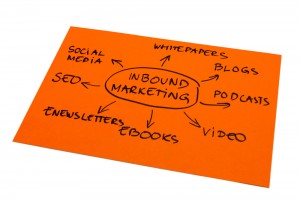 Content plays a cardinal role in inbound marketing. A marketer creates content aligned with his brand and its objectives, and its intended readers come across the content when they are actually looking for it.
Content plays a cardinal role in inbound marketing. A marketer creates content aligned with his brand and its objectives, and its intended readers come across the content when they are actually looking for it.

There are three important qualities that define the perfect inbound content: useful, engaging, and shareworthy. It is these qualities that persuade the audience to go through the content and actually check out the brand that’s putting this content in front of them.
As can be imagined, inbound is not easy. There are plenty of variables that can bring even well-planned campaigns crashing down. Let’s take a look at some of these mistakes:
1) Underestimating the Complexity of Content Creation
Many inbound marketers can be accused of dumbing down inbound marketing. They create content without thinking about the audience’s needs, interests, and preferences. They then expect this content to deliver returns.
The whole idea behind using content to market a brand is making sure that the brand’s target audience will actually love engaging with the content. This is a challenge, and you can’t afford to put sub par content in front of your audience and hope it works.
According to a report by Ascend2, 41% of marketers believe "lack of content creation" sets their inbound strategy back. This tells you content creation cannot be taken lightly; do so and risk the success of your campaign.
2) You Create Content to Market, not Inform
I’ve seen company pages rank high on Google SERPs, in spite of the crappy content these companies published. But those were the days when "great content" had still not emerged as the driving force of internet marketing. Content spammed with keywords was the order of the day, and online marketers had it very easy.
But the landscape has changed: Search engines such as Google are placing a premium on quality, and delivering drivel in the form of content will not cut ice any more. The tragedy is marketers continue to publish and market content for the benefit of search engines, rather than users.
You can’t score with inbound if your core audience is "bots". You are writing for humans. Impress them, and you'll have no problem generating quality leads.
3) Lack of Focus on a Company Blog
Yes, guest blogging is a great way to generate leads, but some marketers are so taken in by the deliverables of guest blogging that they forget about leveraging the potential of their own site. There are companies who’re using their website blog as the hub of their inbound efforts. They've grown their blog to be an authority content destination — the kind of blog that other marketers want to be published on.
There is no doubt that publishing content on high-authority sites is a smart tactic. The article will benefit your brand because it is an authority site, it will be viewed by a new audience, and the article will be shared across a different social network.
But why not make the same effort to come up with high-quality content for your blog? In this case, you are attracting targeted traffic directly to your site, thus improving your chances of conversions.
Ignoring your website blog is a really bad idea.
4) Failing to Leverage the Human Angle
I have another name for inbound. I call it "dialogue marketing." For me, the real key to inbound marketing success is using its various tactics to establish a two way communication between your brand and its audience.
The idea is to humanize your brand with inbound.
Content marketers who fail to see this aspect of inbound might see competitor campaigns running away with their potential customers. A post must be used as a means of triggering interactions with readers who are either your customers or have the potential to become one.
There are various ways you could accomplish this. For starters, reply to all comments that you find in the comments section after your post.
Also, while sharing a link to your content on Twitter, make sure to ask for feedback, and once you get it, respond to it. Do the same on other social media channels. The idea is to use inbound as a catalyst for relationship building. If and when that happens, you can pat yourself on the back and say your campaign is successful. But if that’s not happening, you are making a mistake somewhere.
Is That It?
Not by a long way it isn’t.
The mistakes addressed in this article will give you an idea of the kind of wrong turns even astute marketers take while implementing their inbound strategies. In marketing, be it inbound or outbound, being forewarned is forearmed. So, hopefully, the lowdown on these mistakes will help you take better decisions and ensure your inbound marketing efforts deliver the results you are looking for.

![The 5 Core Services of Inbound Marketing [Free Ebook]](http://53.fs1.hubspotusercontent-na1.net/hubfs/53/00-Blog_Thinkstock_Images/inbound-services.png)


